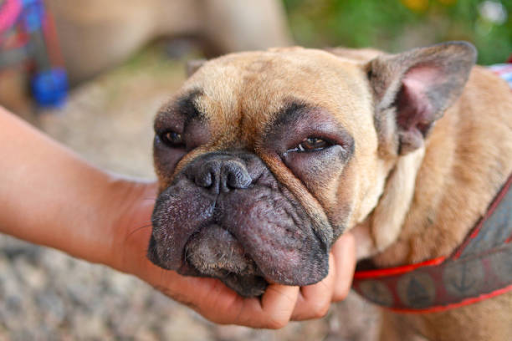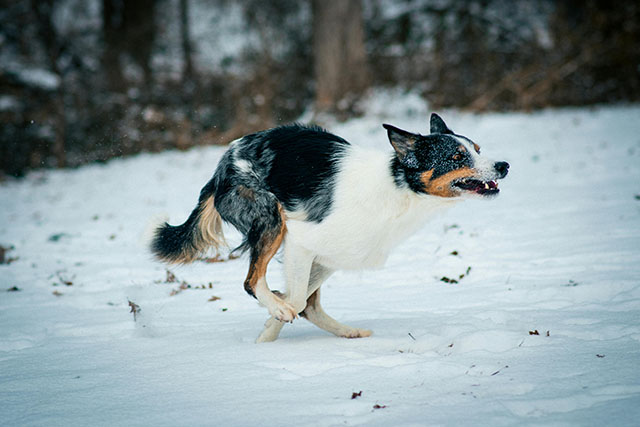Are you struggling to figure out how to manage your canine companion’s allergies? Is pet dander wreaking havoc on your family’s overall health and comfort at home? Don’t fret – many dog owners are in the same boat!
But with some careful planning, simple lifestyle changes, and a few practical tips, you can learn how to successfully manage your pup’s allergies – even if he loves rolling around on the carpet. Explore different strategies for managing dog allergens in the home so that everyone in your family can breathe easily.
Ready to get started? Let’s dive in!
How Do I Deal with Being Allergic to My Dog?
1. Consult an Allergist
The first step in managing your dog’s allergy is to consult an allergist. They can perform tests to determine the specific allergen causing your reactions, which might not only be related to your dog but also include other environmental factors. This will help you better understand the extent of your allergies.
2. Allergy Medications
Allergy medications like antihistamines and decongestants can provide short-term relief from symptoms. However, consult your healthcare provider before taking any medication to ensure it’s safe and effective for your specific allergy.
3. Immunotherapy (Allergy Shots)
Immunotherapy, commonly known as allergy shots, is a long-term solution for allergies. It involves receiving regular injections of small amounts of the allergen, which can help desensitize your immune system over time.
4. Create an Allergy-Free Zone
To create allergy-free zones in your home, you can start by designating specific areas, such as your bedroom. Make sure to use allergen-proof covers for your mattress and pillows, and keep your dog out of this space. This will ensure that you have a clean, allergen-free haven for peaceful sleep. Consider investing in The Dog’s Bed, which features premium memory foam for pain relief and support. Its waterproof, washable cover is designed to seamlessly blend with your home decor, allowing your furry friend to stay close to the family.
How Do You Live with a Dog with a Dog Allergy?
Grooming and Bathing
Regular grooming and bathing can reduce your dog’s fur allergens. Opt for hypoallergenic pet shampoos and wipes specifically formulated for this purpose. If feasible, delegate these tasks to a family member who doesn’t have allergies or to a professional groomer. Try the Kibble Pet Dog Shampoo, which moisturizes and soothes the coat with a pleasant honey scent. It also acts as a deodorizer, ensuring long-lasting freshness. This hypoallergenic product is certified organic and proudly made in the USA.
Clean Your Home Regularly
Frequent cleaning is crucial in managing dog allergies. Vacuum your home using a HEPA filter vacuum cleaner to trap allergens. Pay close attention to carpets, rugs, and upholstery. Additionally, wash your dog’s bedding regularly to minimize allergen buildup.
Air Purifiers
Invest in a good quality HEPA air purifier to help filter out allergens from the air in your home. Place these purifiers in common areas and your bedroom for maximum effectiveness.
High-Efficiency Air Filters
Use high-efficiency air filters in your HVAC system to catch allergens as they circulate through your home. Change these filters regularly to maintain their efficiency.
Limit Dog Access
You can establish clear boundaries to restrict your dog’s access to certain areas of the house. Consider utilizing baby gates or closing doors to prevent your dog from entering rooms where you spend a significant amount of time, such as the bedroom or living room. One recommended option is the Summer Infant Safety Pet and Baby Gate. It has a width range of 29.5″ to 53″ and a height of 38″, providing a secure barrier. Additionally, this gate can be either pressure or hardware-mounted, giving you flexibility in installation on walls or banisters in doorways or stairways. It also features an auto-close walk-thru door for convenience and ease of use. Available in white, this gate ensures safety while maintaining a stylish appearance.
Will Dog Allergies Go Away?
Unfortunately, dog allergies typically do not go away on their own. However, the severity of your symptoms may change over time. Some individuals find that their allergies become less severe as they age, while others may experience worsening symptoms.
The best way to manage dog allergies is to follow the advice provided in this guide. You can live more comfortably with your beloved furry companion by taking proactive measures to reduce allergen exposure.
To determine what type of allergies and how to treat them, check out this video:
How Long Do Dog Allergens Stay in the House?
Dog allergens can linger in your home for a significant amount of time, even if you don’t have a dog. The duration these allergens remain present varies based on a few factors. Here’s a general idea of how long dog allergens can stay in a house:
- Immediate Presence: If you have a dog in your home, allergens will be constantly generated. The allergens are in your dog’s dander, saliva, and urine. These particles can remain suspended in the air for several hours and settle on surfaces like furniture, floors, and walls.
- Long-term Residue: Even after a dog is removed from a home, the allergens can continue to be a problem. Dog allergens are known to be very sticky and can adhere to surfaces. They can linger in your home for months or even years after the dog is gone.
- Cleaning Frequency: Regular cleaning can significantly reduce dog allergens in your home. If you vacuum, dust, and clean surfaces frequently, you can minimize the buildup of allergens. However, if cleaning is infrequent, allergens will accumulate over time.
- Ventilation and Airflow: Proper ventilation and airflow in your home can help reduce allergen concentrations. Opening windows, using exhaust fans, and using air purifiers with HEPA filters can help remove allergens from the air.
- Humidity: Humidity levels in your home can impact the persistence of dog allergens. Higher humidity can make allergens settle more quickly, while lower humidity can keep them airborne longer.
- Personal Sensitivity: The length of time dog allergens affect you can depend on your sensitivity. Some people may experience symptoms in the presence of even small amounts of allergens, while others may not be affected as quickly.
It’s essential to note that the presence of dog allergens in your home doesn’t necessarily mean you will have allergic reactions to pets. Some people with allergies may be more sensitive to these allergens than others.
Is There a Cure for Being Allergic to Dogs?
There is no known cure for dog allergies. However, ongoing research in allergy treatment may offer hope for the future. Some potential areas of interest include:
- Allergen-Specific Immunotherapy: This treatment involves exposing the immune system to small, controlled doses of allergens to build tolerance. While it is not a cure, it can significantly reduce the severity of allergic reactions in some individuals.
- Biologic Medications: Newer biologic medications are being developed to target specific molecules and cells involved in allergic reactions. These medications may offer more effective symptom relief in the future.
- Gene Therapy: Although early, gene therapy research shows potential for altering the genes responsible for allergic reactions. This could lead to a long-term solution for allergies.
It’s important to monitor developments in allergy research and consult with allergists to explore the latest treatment options. While there’s no cure yet, ongoing scientific advances may hold promise for those with dog allergies.
Wrapping Up: Your Path to an Allergen-Friendly Home for You and Your Dog
Living with a dog allergy can be challenging, but it doesn’t mean you must give up the joy of having a canine companion. Following the strategies outlined in this guide can significantly reduce allergen exposure and enjoy a happier, healthier life with your four-legged friend.
Always consult with medical professionals and stay informed about the latest developments in allergy treatment to ensure you make the best choices for your health and well-being.
Jessica is a veterinary medicine student who is passionate about animals. Living with her cherished dog, Milo, deepens her understanding of the human-animal connection, enhancing her empathy as a future veterinarian.
Jessica’s concise articles reflect her dedication to improving the lives of animals and those who care for them, making her an inspiring figure in the pet care field.







